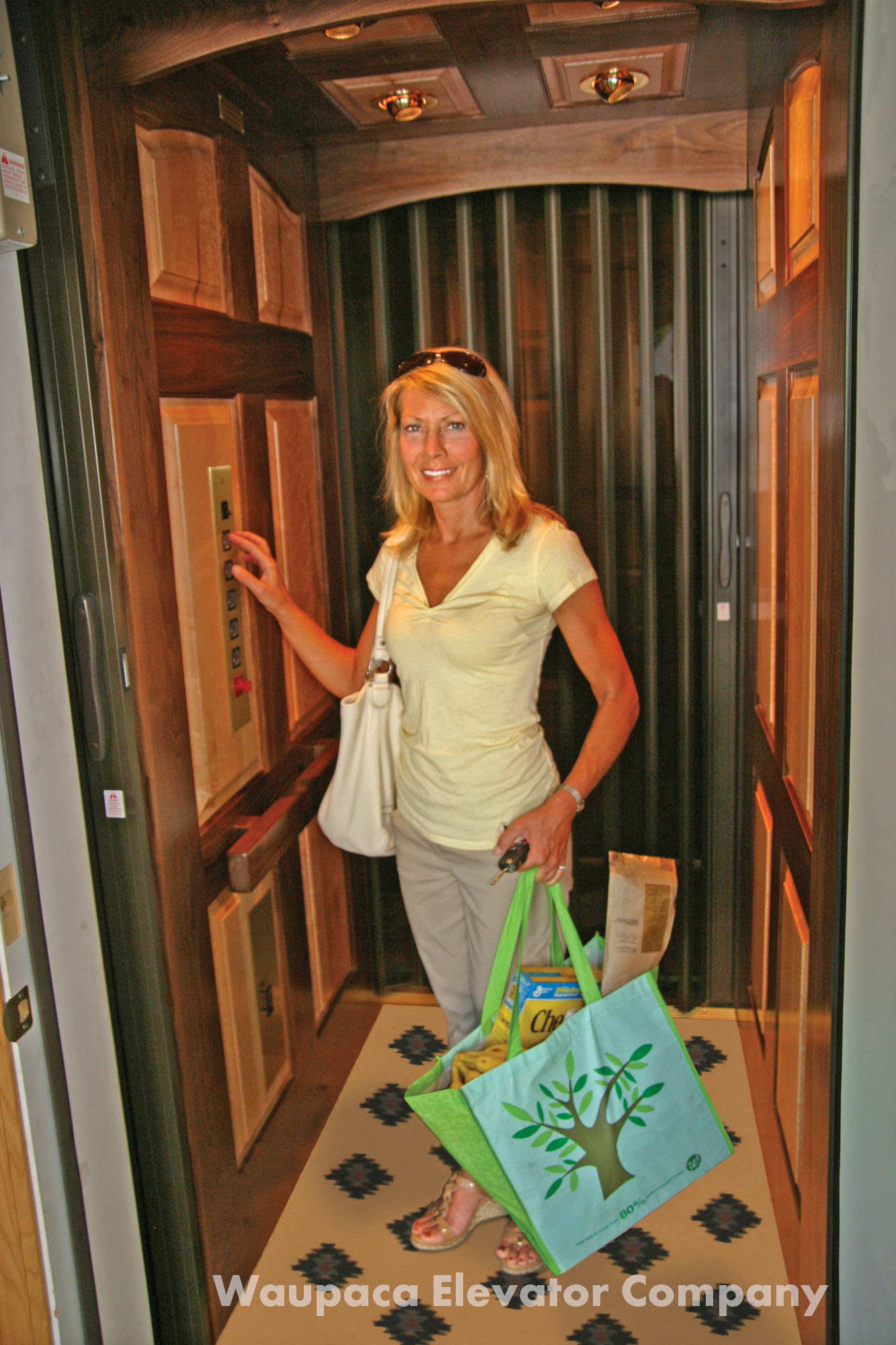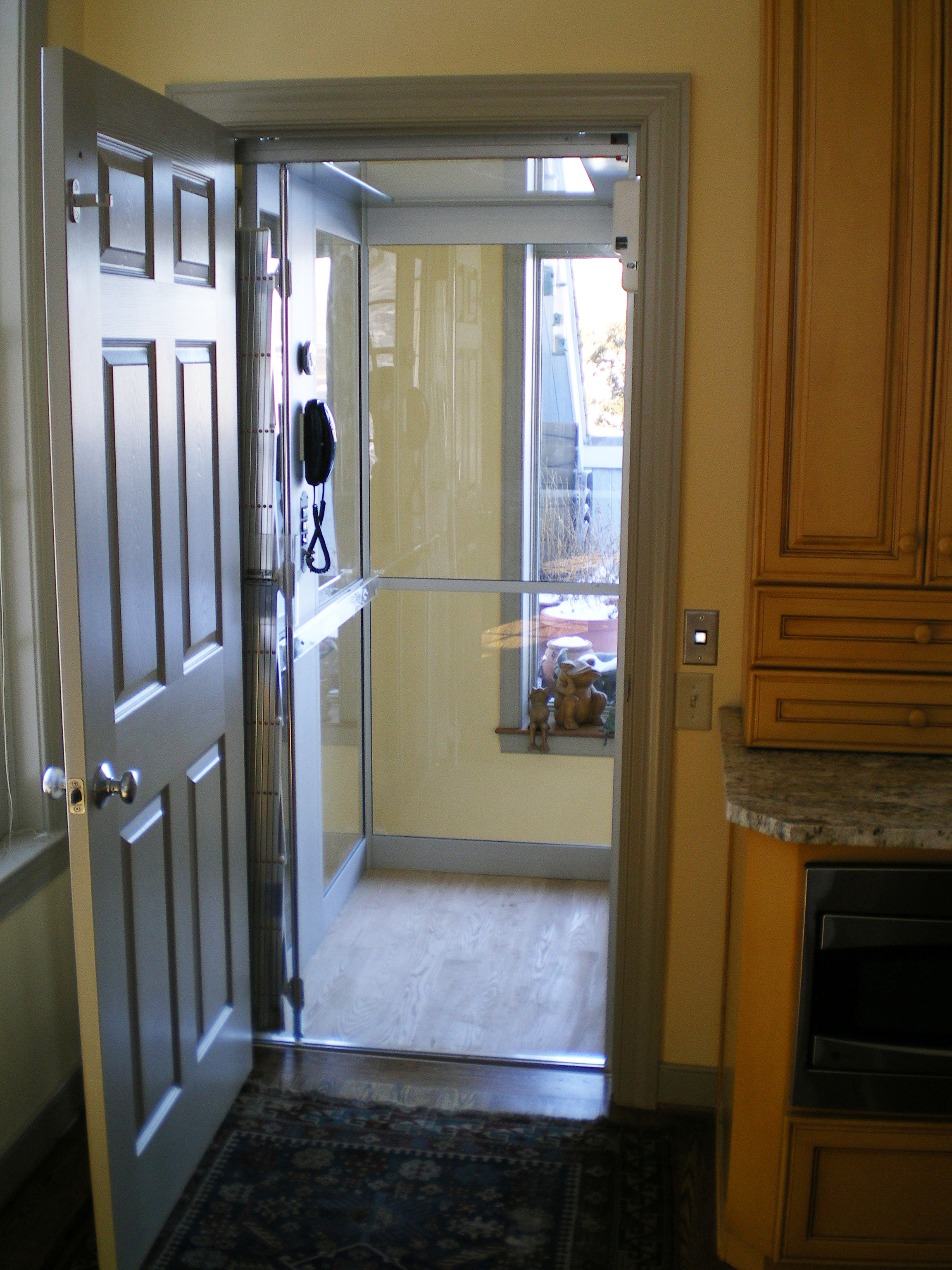Are you building a new home and thinking about equipping it with the convenience of a home elevator? Perhaps life circumstances have you considering the addition of a home elevator to your current residence. Either way, a home elevator offers a safe, accessible alternative to climbing stairs, plus it adds to your home’s future resale value. To get the right solution for your particular requirements, here are some things to keep in mind when planning your purchase:
Space Requirements, Capacity and Weight Load

If you are including plans for an elevator in a new home build, you will have greater flexibility in the style and type you choose, but even existing homes can accommodate a home elevator. Typically, an unfinished hoist way of 5 x5 feet is large enough for the majority of home elevators. Space-saving monorail designs feature smaller elevator bases and allow for smaller elevator cabs.
Along with the “footprint” of your elevator, choosing the right model also includes considering your needs for cab capacity and weight load. Do you want an elevator that will be able to accommodate a wheelchair, a wheelchair and one attendant or just big enough for one or two people? Determining the right-sized elevator for your space brings into consideration all these factors.
The experts at RCM Elevators can guide you through this choice process and provide you with planning guides that your architect or builder can review in preparation for elevator installation.
Drive Options:
There are different drive options for a residential elevator: cable drum, hydraulic or overhead cable drum.
- Cable drum elevators require a machine room adjacent to the hoistway.
- Hydraulic requires a machine room as well but doesn’t need to be adjacent to the hoistway.
- Overhead cable drum does not need a machine room. Also known as the MRL (Machine room-less) The motor and gear box sit on top of the main guide rail in the hoistway.
Ones without a machine room requirement are referred to MRLs (Machine Room-Less.) They are often more practical to install in existing residences, requiring less infrastructure alterations. We can walk you through pros and cons of the different types to ensure your satisfaction.
Safety/Controls
 Along with convenience, safety is a primary factor in choosing a home elevator. Operation should be simple and straightforward with easy to use controls. Although getting stuck is a rare phenomenon, you should select a model that has the ability to be manually lowered so you can safely exit the cab.
Along with convenience, safety is a primary factor in choosing a home elevator. Operation should be simple and straightforward with easy to use controls. Although getting stuck is a rare phenomenon, you should select a model that has the ability to be manually lowered so you can safely exit the cab.
Also, select an elevator that can operate even if the power goes out. Some models come with backup battery units to use during power outages.
Make sure you have a telephone landline in your home. Per code you are required to provide a land line for the phone in the elevator. This provides not only convenience but another safety measure as well.
Sensors are important, there are standard safety features and sensors that will prevent the elevator from running if the door or gate is open or if there is a problem with the elevator.
Design & Finish Choices
Last, but certainly not least, what do you want your home elevator to look like? No doubt you’ll want something that blends with your existing home style and complements your décor. Residential elevators come with a myriad of choices for cab style and hardware finishes.
From rich wood paneling to Plexi-glass walls that deliver a more open cab experience, there are lots of design choices to make. RCM Elevators can guide you through the process of choosing a residential elevator that fits your space esthetic and budget.
Call us today at 888-353-8878 for more information
